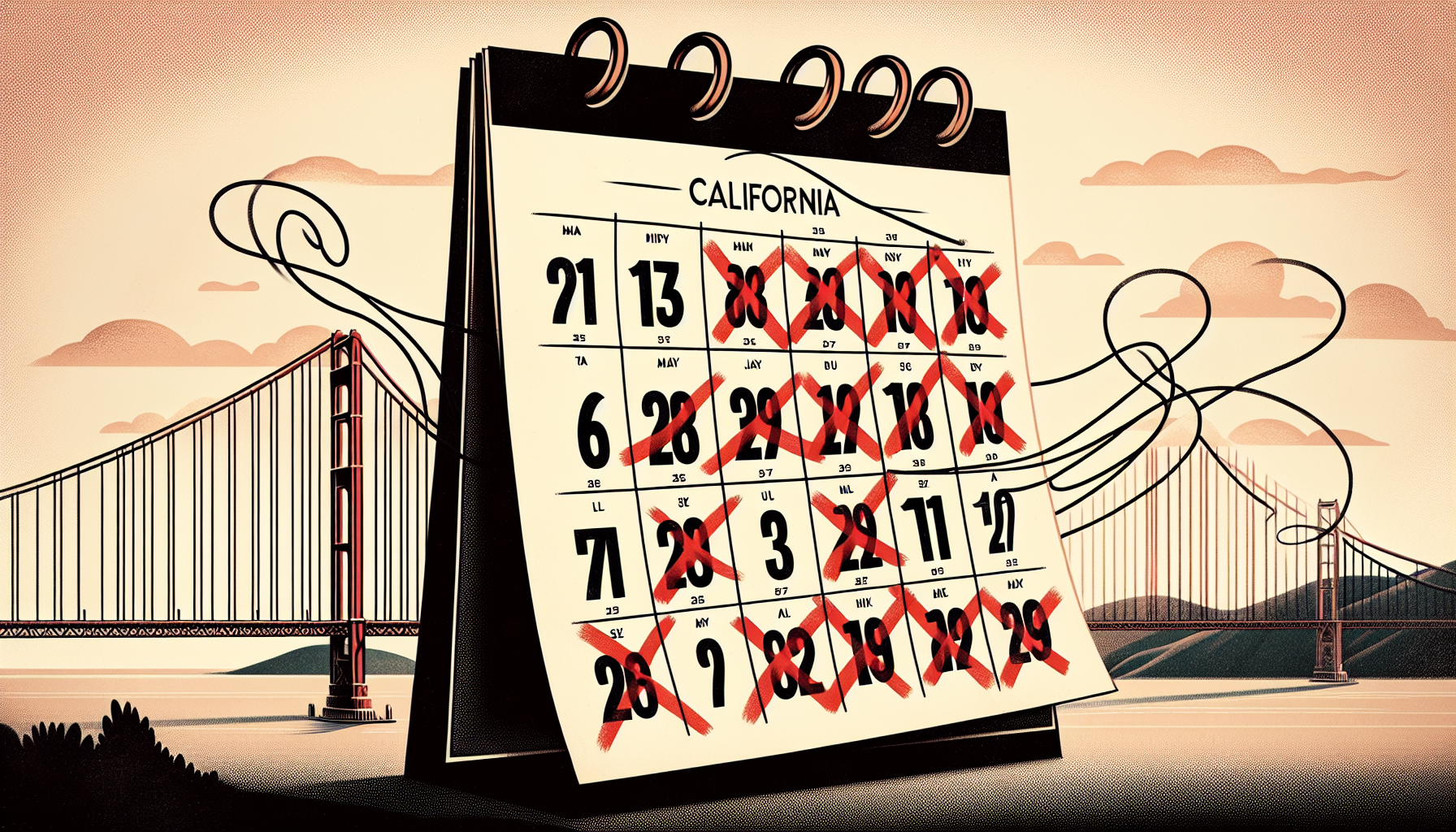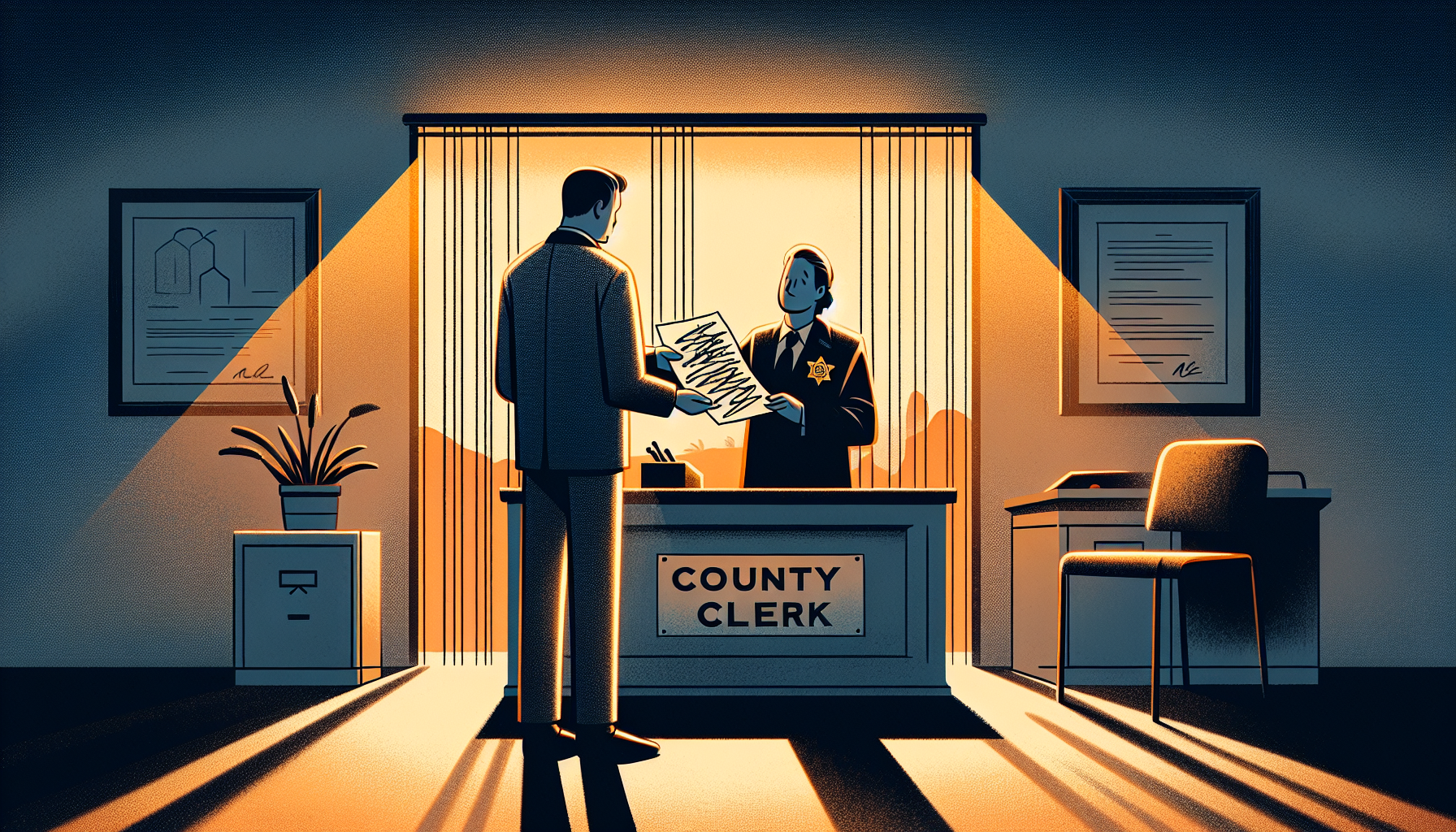If you’re wondering, “How long does a divorce take in California?” the straightforward answer is that, by law, it involves a minimum six-month waiting period starting from the service of divorce papers. However, the total time to finalize a divorce can vary significantly. Contested issues, court backlogs, and mutual agreements can either extend this period considerably or allow for a swifter resolution—each divorce timeline is unique.
Key Takeaways
California mandates a six-month waiting period for divorce to allow couples to reconcile and negotiate settlement terms, which is mandatory regardless of the circumstances.
The divorce timeline in California can be significantly affected by whether issues are contested; uncontested agreements can accelerate the process, while contested issues can extend proceedings, especially when children and assets are involved.
Despite the possibility of expediting the process for eligible couples through options like summary dissolution, the six-month waiting period stands firm. Strategies such as alternative dispute resolution and legal representation can facilitate a faster resolution within this timeframe.
Navigating the Timeline of Divorce in California

The path to a divorce in California is marked by a series of steps governed by state law, each with the potential to either expedite or extend the journey. The course is not always swift, as California law mandates a six-month waiting period, often seen as a time for reflection or negotiation. However, contested issues and mutual agreements can dramatically affect the timeline, prolonging the divorce process with court battles or paving the way for a smoother resolution.
Mandatory Six-Month Waiting Period
As the first marker on the road to dissolving a marriage, California sets a mandatory six-month waiting period, a reflective pause that begins when the divorce papers are served. This period serves a dual purpose: it offers a chance for reconciliation and time for couples to reach agreements on critical aspects of their separation.
It’s both a legal requirement and a potential period for strategic negotiation.
Impact of Contested Issues on Duration
However, the terrain can become rugged when contested issues arise. Disagreements over child custody, property division, or spousal support can transform the path into a lengthy expedition, extending the divorce process far beyond the six-month waypoint. So, how long does a divorce take in such cases? It ultimately depends on the complexity of the issues and the willingness of both parties to reach an agreement.
These contested divorces often require additional months of negotiation and court appearances, potentially lengthening the journey, especially when dealing with custody agreements.
The Role of Mutual Agreement
Conversely, mutual agreements can act like a high-speed rail through the waiting period when parties agree. When couples can find common ground on the terms of their divorce, they set themselves up to finalize the divorce expeditiously, sometimes immediately after the waiting period concludes. Being on the same page can significantly trim the timeline and potentially reconcile differences more efficiently.
Filing the Initial Divorce Papers: What You Need to Know

Embarking on the divorce process in California starts with filing initial papers, but not without first ensuring residency requirements are met. Those looking to file must have lived in the state for at least six months and in the county of filing for three.
This stage includes preparing key documents, such as the divorce petition and summons, without a mandatory separation period before initiation.
Preparing the Divorce Petition
Preparing the divorce petition is akin to setting the compass for the journey ahead. The Petition for Dissolution (Form FL-100) and the Summons (Form FL-110) lay the groundwork, detailing the desired terms and conditions of the divorce. The critical first step signals the beginning of the legal process and the importance of properly handling your divorce paperwork.
Serving Your Spouse and Awaiting Response
Once the divorce papers are meticulously prepared, the next crucial step is to serve them to your spouse. This formal delivery kicks off a 30-day clock, during which your spouse can respond. Serving the papers sets the legal wheels in motion and ensures that both parties are officially aware of the pending dissolution.
Understanding Different Types of Divorce Cases
As you journey down the road of divorce in California, you’ll find that the route can vary widely depending on the type of divorce case you’re navigating. The state offers paths like uncontested divorce, online divorce, and collaborative divorce, each with its own set of procedures and potential durations.
Your specific circumstances will determine which path you take, and understanding the nuances of each is essential.
Uncontested Divorce Proceedings

The path of an uncontested divorce, such as a summary dissolution, is smooth and unencumbered for eligible couples. It’s the fast lane of divorce options, designed for short-term marriages with no children and minimal assets. Couples who agree on all terms can potentially finalize their divorce shortly after the mandatory six-month period, bypassing lengthy court procedures.
Navigating Through Contested Divorces
In contrast, the road to a contested divorce is fraught with potential detours and roadblocks. With complex negotiations and court involvement, these cases can stretch out for much longer, sometimes even years.
The mediation and negotiation phases alone can consume months, let alone the time required for the trial itself.
Default Judgments in Absence of Response
There’s also a less trodden path: the default judgment. This occurs when a spouse doesn’t respond to the divorce petition within 30 days. In such cases, the divorce can proceed without their input, bypassing the need for a trial and potentially keeping it within the normal timeframe.
Legal Separation vs. Divorce: Choosing Your Path

When contemplating the end of a marriage, some may consider a different route altogether: legal separation. This path allows couples to live apart and make formal arrangements without ending their legal marriage, offering a distinct alternative to the finality of divorce.
Benefits of Legal Separation
Legal separation has its advantages. It allows couples to untangle their finances and address child custody while preserving certain benefits like insurance and retirement accounts. It’s an option that provides breathing room and legal structure without severing the marital bond.
Transitioning from Separation to Divorce
Yet, for some, legal separation is merely a rest stop on the way to divorce. It can serve as a period of reflection, after which couples may choose to convert their separation into a full divorce, effectively ending their marriage after determining that reconciliation is not in the cards.
Expedited Divorce: Is It Possible?
The question often arises: can the divorce process be expedited? For those who qualify, options like summary dissolution suggest a quicker path. However, even this expedited route adheres to the six-month waiting period, a testament to the state’s commitment to a thoughtful consideration of marriage dissolution.
Shortening the Waiting Period
Despite the desire for swiftness, the six-month waiting period in California is a fixture on the divorce timeline that judges cannot waive. It is a reflection period, allowing spouses to consider reconciliation before finalizing their separation.
Strategies for Faster Resolution
However, certain strategies can help move the process along within the confines of the waiting period. Alternative dispute resolutions, meticulous paperwork, and the guidance of an experienced divorce attorney can all contribute to a more efficient and swifter conclusion.
Finalizing Your Divorce: Steps After the Waiting Period
Once the waiting period has passed, finalizing your divorce involves a court review of your settlement agreement. This step is crucial, as it confirms that the terms of your divorce are fair and meet legal standards, moving you closer to obtaining your divorce decree.
Court’s Review of Settlement Agreements
The court scrutinizes settlement agreements to ensure they are equitable and comply with state laws. This review process is the final hurdle before the terms of the agreement are cemented into law and enforceable by the court.
Obtaining the Divorce Decree

The last mile involves obtaining the divorce decree, a document that officially ends your marriage and outlines the terms of your divorce. This decree is obtained by following the procedures laid out by the court, marking the end of the legal process of divorce.
Assistance Throughout the Process: The Role of a Divorce Attorney
While the journey through a California divorce can be navigated alone, the expertise of a divorce attorney can be invaluable. They offer:
Legal representation
Guidance and support
Ensuring that your rights are protected
Ensuring that the process runs as smoothly as possible.
Why Choose an Experienced Divorce Attorney
The terrain of a divorce is often complex, and an experienced divorce attorney can be your advocate, ensuring that the final settlement is fair and your interests are safeguarded throughout the proceedings.
How an Attorney Can Streamline the Process
An attorney can provide the following benefits when dealing with family law matters:
Simplifying the process
Expediting the process
Avoiding unnecessary litigation
Ensuring all paperwork is filed correctly and on time
Providing knowledge and experience to guide you through the complexities of family law
Having an attorney by your side can be a beacon, helping you navigate through the legal aspects of your case in the local court.
Summary
As we reach the end of our journey, it’s clear that the path to divorce in California is paved with mandatory waiting periods, various types of proceedings, and the potential for both expedited and extended processes. Whether you choose the road of legal separation or take the steps toward a divorce decree, it’s essential to understand the landscape and the legal requirements. With the right preparation and the assistance of a seasoned divorce attorney, you can navigate this transition with confidence and clarity.
Frequently Asked Questions
How long is the mandatory waiting period for a divorce in California?
In California, the mandatory waiting period for a divorce is six months from the date the divorce papers are served.
Can the six-month waiting period in California be waived by a judge?
No, judges in California do not have the authority to waive the six-month waiting period for a divorce.
What is the fastest type of divorce process available in California?
In California, the fastest type of divorce process available is the summary dissolution. It can be finalized shortly after the six-month waiting period for eligible couples.
Is legal separation in California the same as divorce?
No, legal separation in California allows couples to live apart and make formal arrangements without ending their legal marriage, unlike divorce, which dissolves the marriage.
How can an experienced divorce attorney help expedite the divorce process?
Hiring an experienced divorce attorney can help speed up the process by providing expert negotiation, preventing errors in paperwork, and guiding you through court proceedings effectively. This assistance can streamline the divorce process significantly and reduce unnecessary delays.


